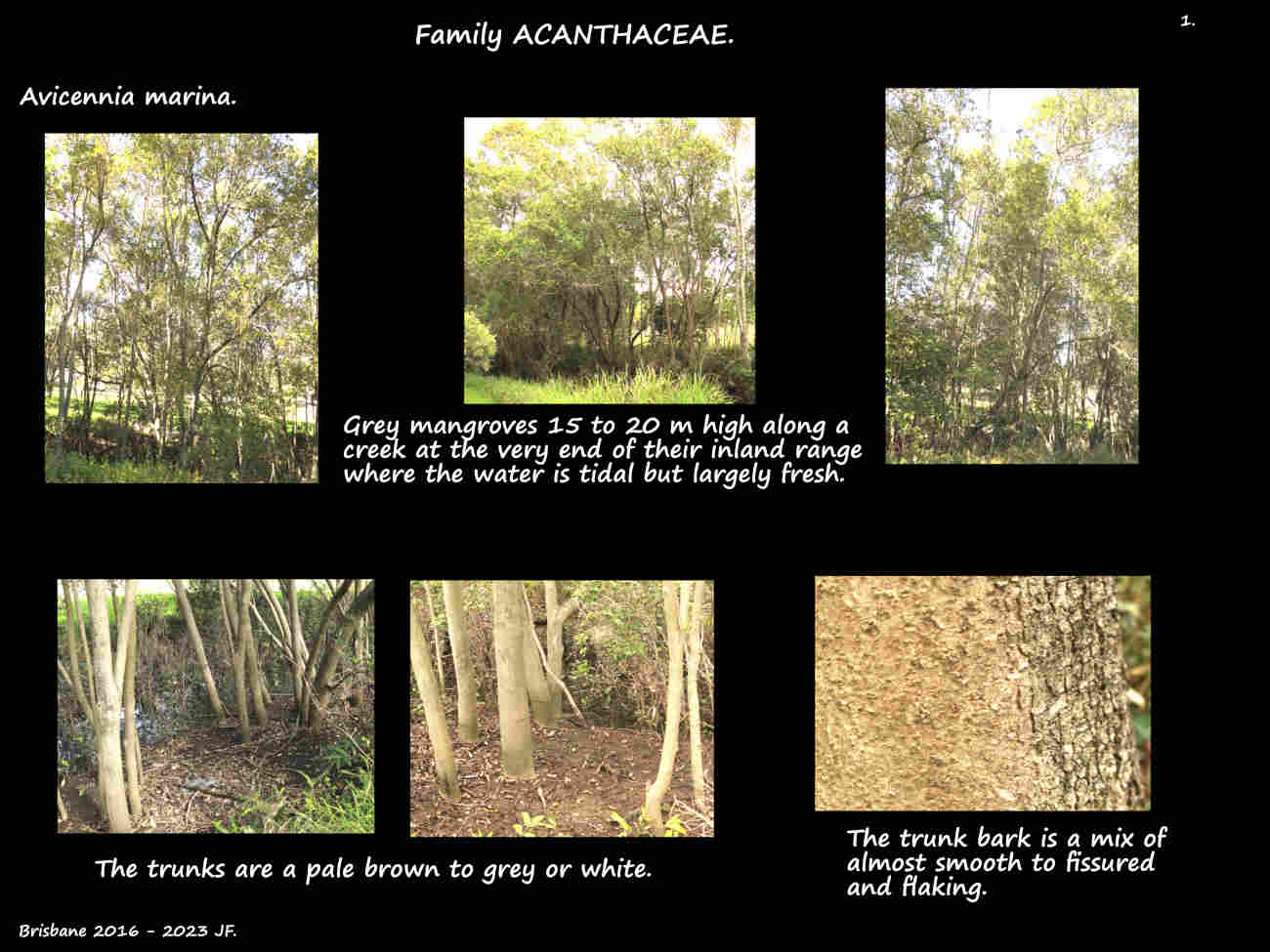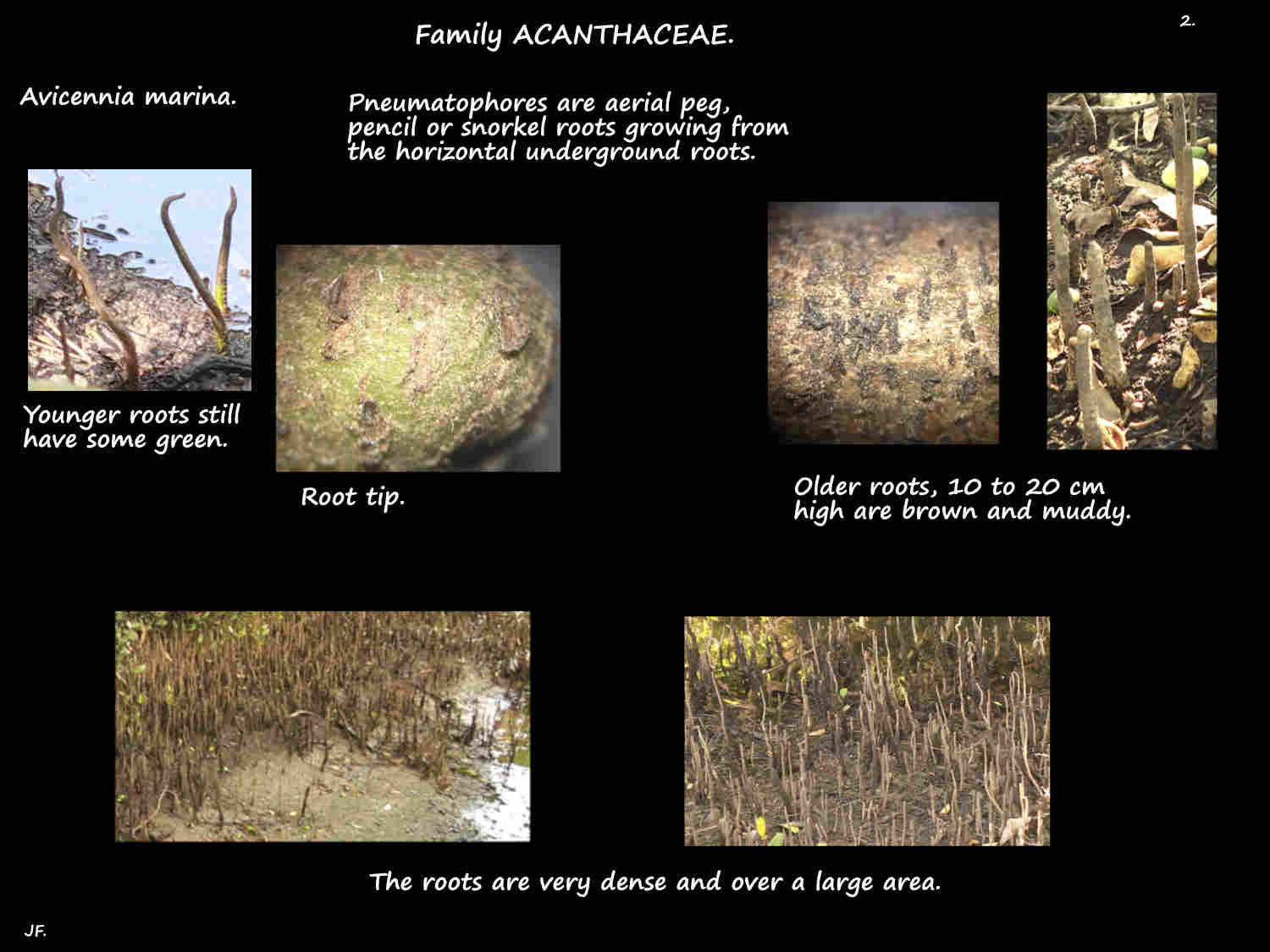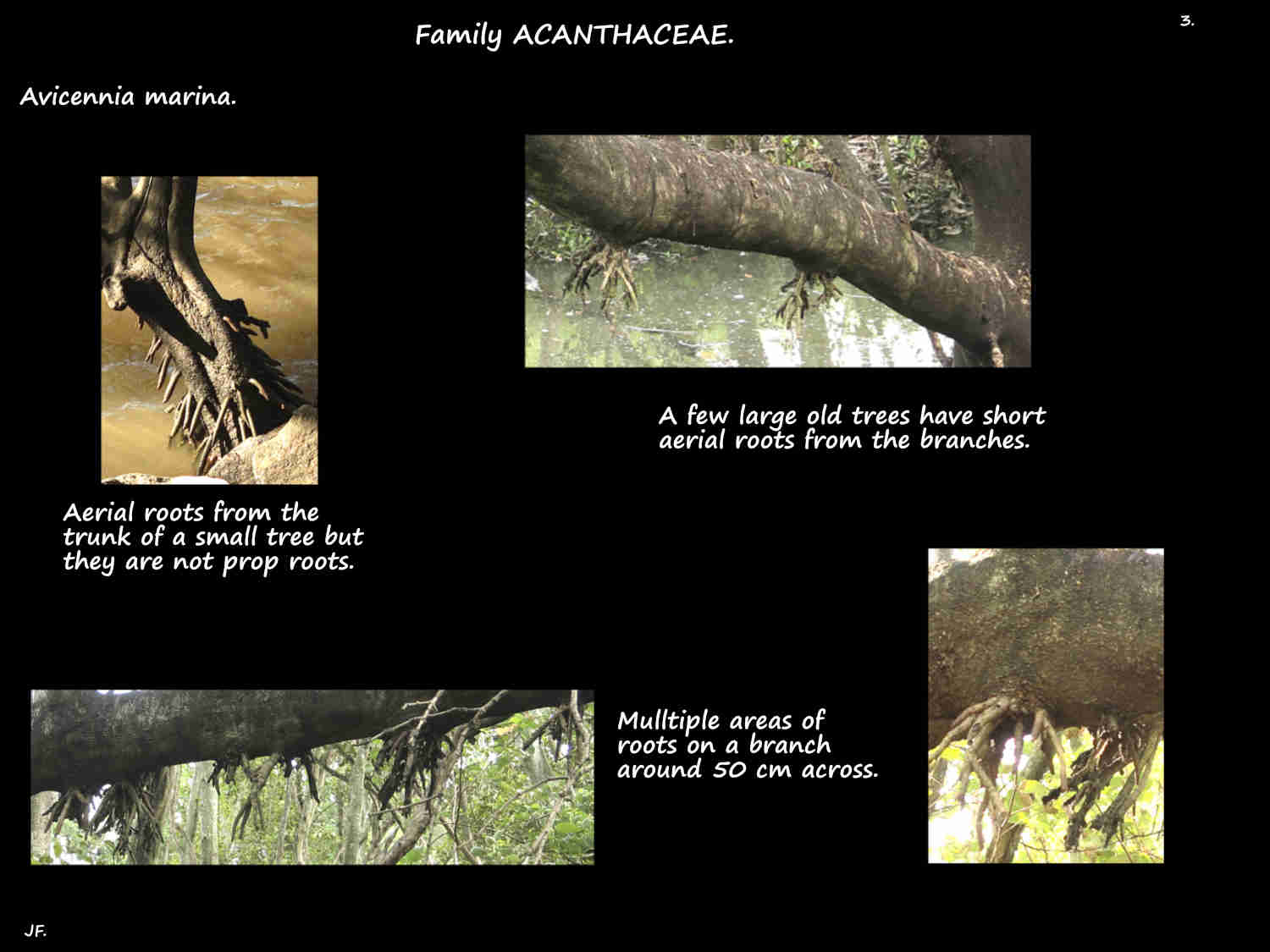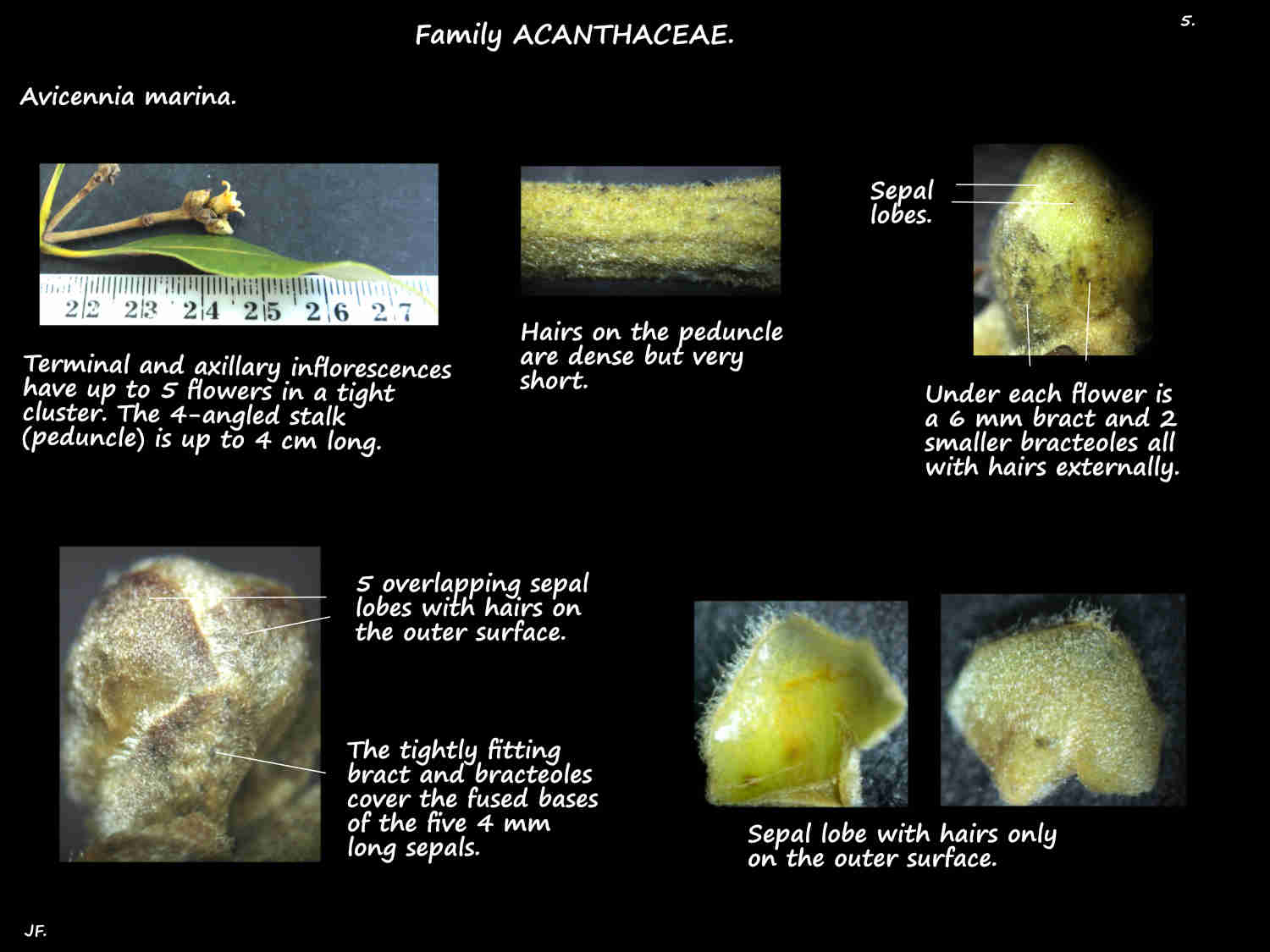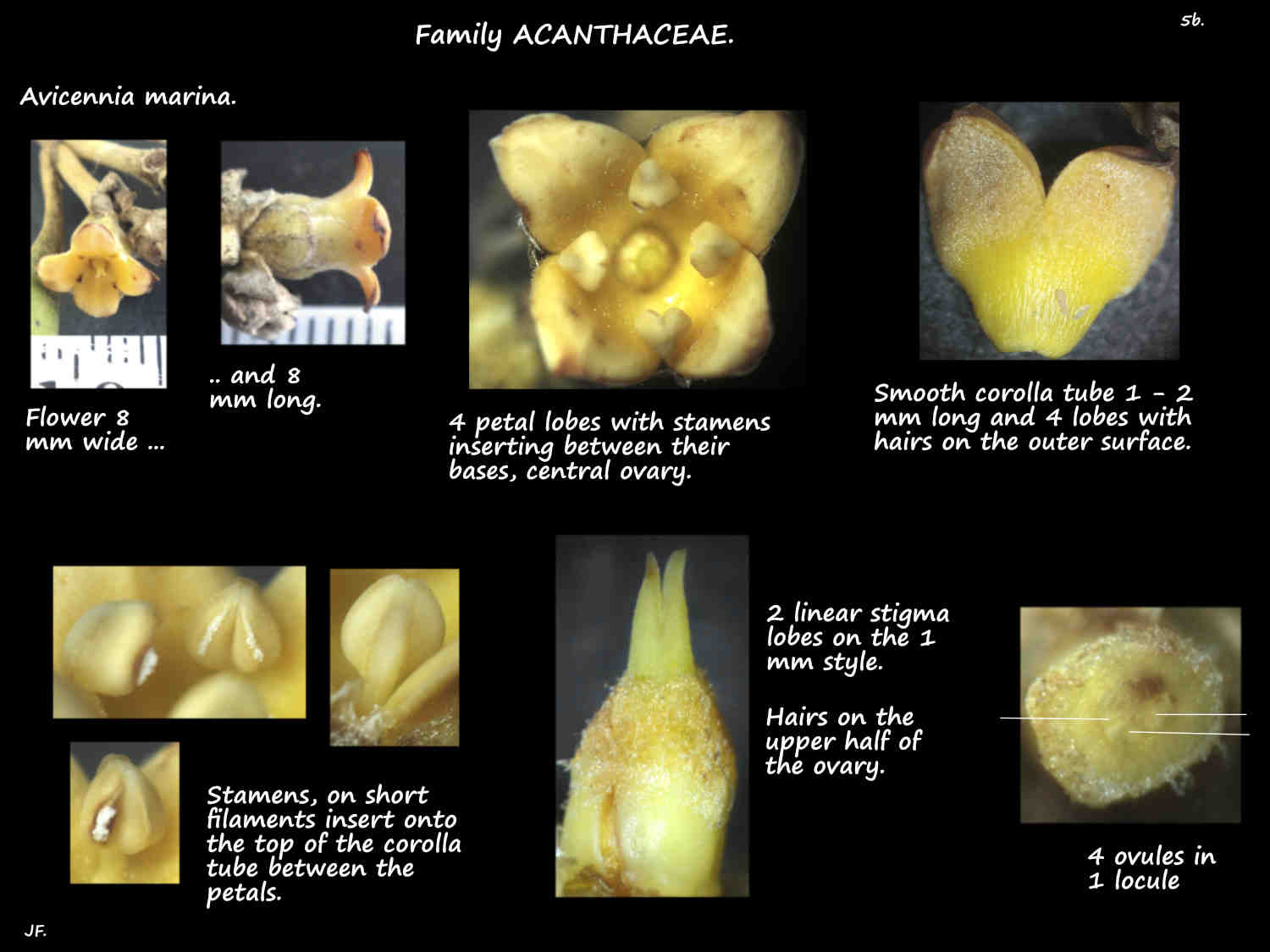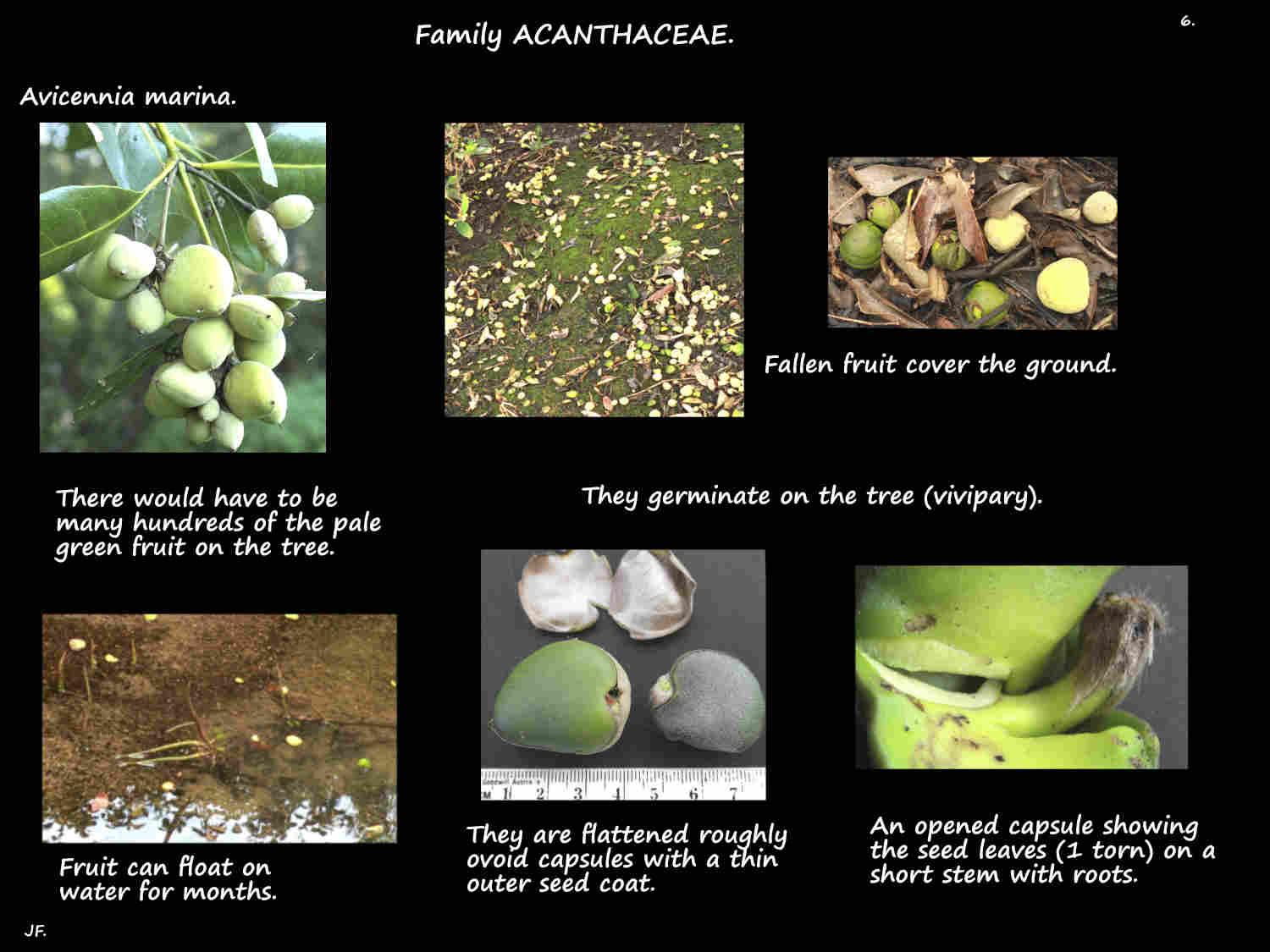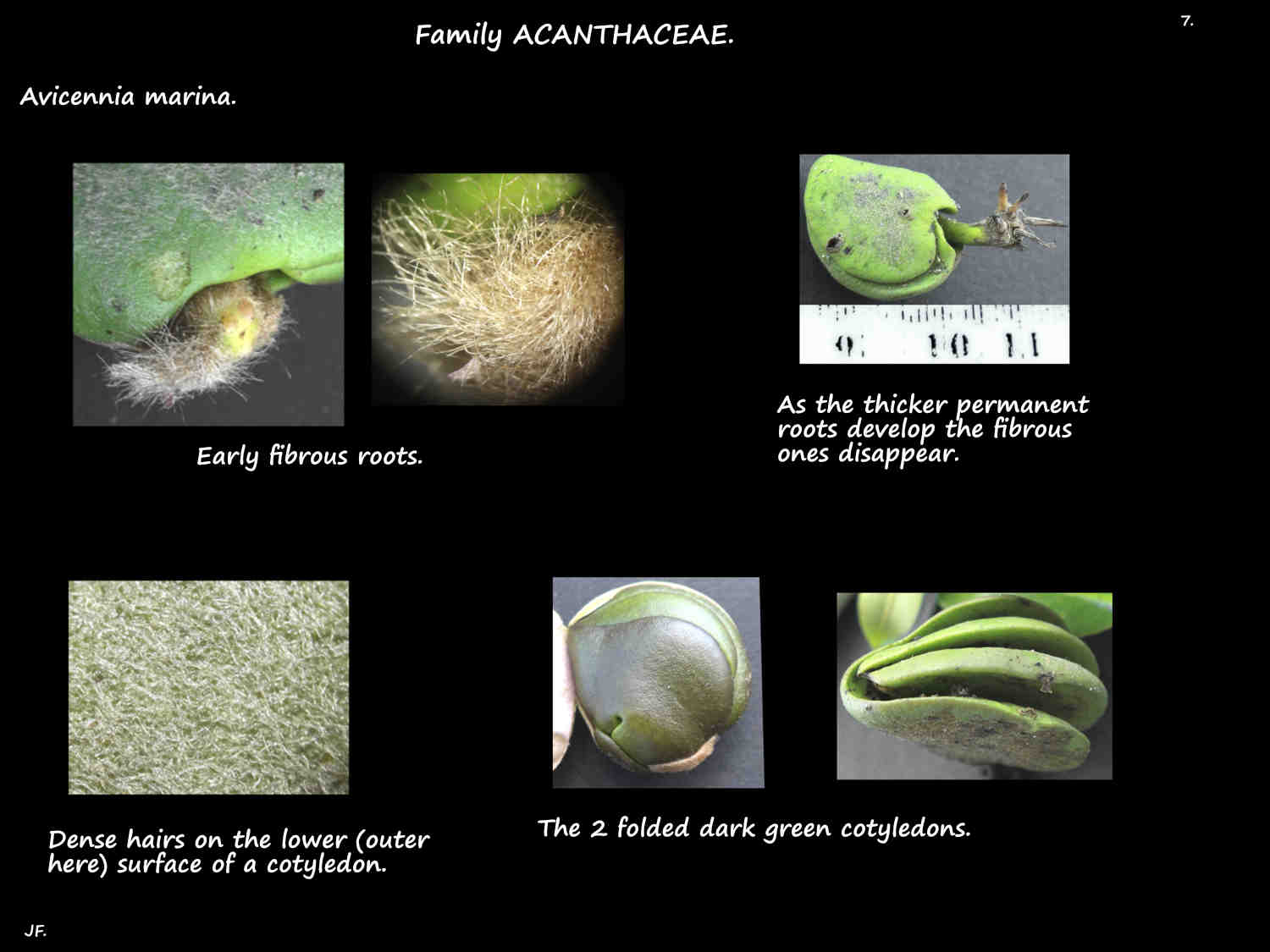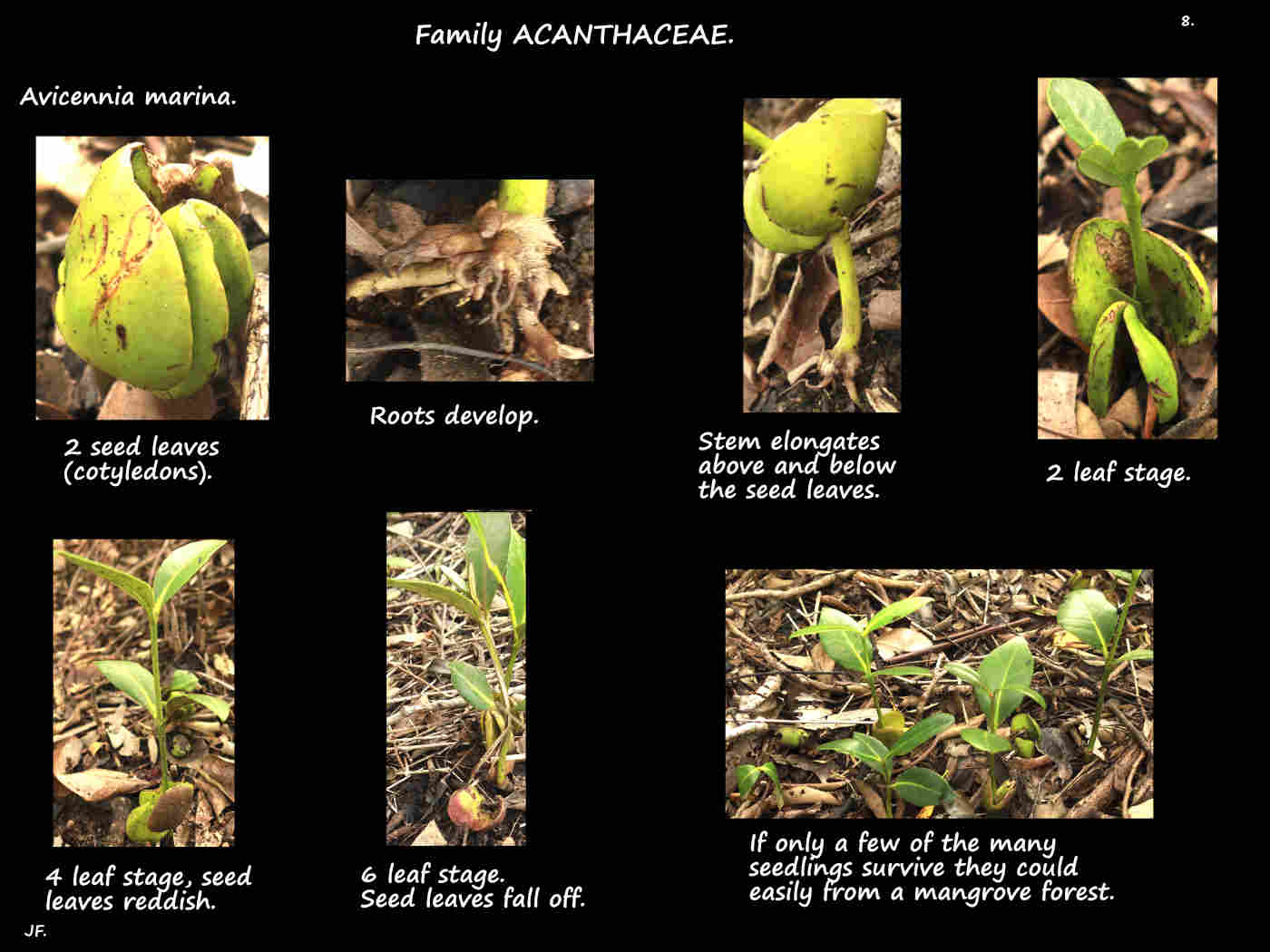Avicennia marina.
Now in Subfamily Avicennioideae of the Acanthaceae s.l. family it is commonly known as the Grey or White mangrove.
They are the most common and widespread mangrove along the S. E. Queensland coast.
Depending on where they are growing their features can vary greatly and these often resemble other mangroves growing among them.
Because of this variability there are up to 5 subspecies and varieties described.
They are commonly seen with the River mangrove Aegiceras corniculatum (in Family Primulaceae).
Grey mangroves grow in the inter-tidal area between the average sea and high tide levels.
They are seen as shrubs from 3 to 5 m high or as trees up to 15 m.
Occasionally short aerial roots are seen from the lower branches or trunk but they do not act as prop roots.
Growing in soft mud or sand they have an extensive horizontal underground root system to support them.
These substrates have very little oxygen and to compensate for this vertical aerial roots grow from the horizontal ones.
These pneumatophores (peg or pencil roots), around 10 to 20 cm long and 1 cm thick can be dense and cover a large area.
The trunk, sometimes more than 50 cm across has pale grey bark that is smooth or fissured.
There are many branches, often from low on the trunk and a dense rounded crown.
The leaves are opposite and decussate (in 4 ranks) and on a petiole from 3 to 5 (15) mm long.
The base of the blade runs down it forming narrow wings.
The thick leathery blades are variable and can be ovate, elliptic, lance-shaped or oblong.
They are 3 to 12 cm long and 1 to 5 cm wide with a sharp or blunt pointed tip, a tapering base and the edges may roll under slightly.
The upper surface is a smooth shiny green and the lower is pale grey to white.
Very young leaves and small angled twigs usually have dense hairs but these are soon lost.
Living in salty water they absorb a lot of salt and this is excreted through the leaves.
There are pores (stomata) scattered on the upper surface but more dense on the lower.
The terminal and axillary inflorescences are on 4-angled stalks or peduncles up to 4 cm long.
Peduncles, densely covered with tiny hairs have one flower or, more often a dense cluster or head of up to 5.
There may also be a pair of flowers, opposite each other lower down the peduncle.
Heads are around 1 to 1.5 cm across and the individual flowers have no stalk or pedicel.
At the base of each flower is a bract and 2 bracteoles 2 to 4 mm long that fit tightly around the sepals.
They are ovate to almost round with a smooth inner surface.
The dense hairs on the outer surface are gradually lost.
The calyx has 5 almost round sepals up to 4 mm long that are joined at the base.
There are hairs (cilia) on the edge and dense hairs on the outer surface.
The bell-shaped corolla has 4 (5) petals up to around 6 mm long and 5 mm wide.
Their bases are fused onto a corolla tube 1 to 2 mm long that has no hairs.
The ovate lobes have a pointed tip and dense matted hairs on the outer surface.
Flowers can be white or yellow and the throat of the corolla tube is slightly orange.
The 4 stamens, inserted onto the top of the corolla tube alternate with the petal lobes.
They have very short filaments with bright yellow anthers.
On older flowers the petals and stamens become black.
The superior conical green ovary, around 2.5 mm long has some hairs on the upper part.
The single locule has 4 ovules and the 1 mm long style has 2 stigma lobes.
The flattened pale green roughly ovoid capsules, up to 3 cm long and 2 cm wide have dense short hairs.
Each capsule has only 1 seed that germinates on the plant and if it falls into the water it can float.
Inside are 2 fleshy green folded seed leaves or cotyledons on a short stalk.
The calyx and involucre remain on the fruit.
J.F.

